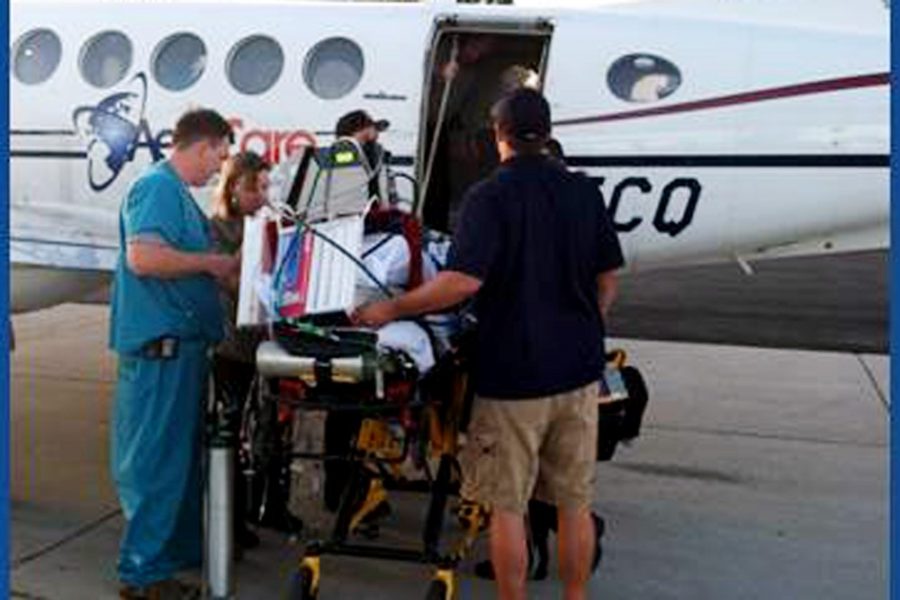This flu season, the H1N1 virus latched on to the U.S. once again, but a program at the UAMC has been saving lives by bringing out the big guns.
This season, doctors at the University of Arizona Medical Center have placed 10 H1N1 patients on extracorporeal membrane oxygenation machines, artificial heart and lung machines that gives patients time to heal their failing organs.
What separates the UA’s ECMO program from others is its ability to place patients on ECMO as they are transported back to the UAMC, where there’s the manpower and money to keep them alive.
Eight of the 10 swine flu patients were transported there, said Dr. Yuval Raz, an assistant professor in the UA’s College of Medicine and medical director of the ECMO Services Program.
Raz leads the program with cardiothoracic surgeon Dr. Jess Thompson, the surgical director of the program.
Just two weeks ago, the ECMO team was able to get Amanda Sprentz’s partner on ECMO and recovering because of its ability to transport patients.
Sprentz’s partner, 39, is asthmatic and was first thought to have had pneumonia, a severe lung infection, but was later found to have the H1N1 virus.
She’s now under intensive care, but is making progress every day, Sprentz said.
“[I had] never heard of the ECMO program before, but it is one of the best things and truly is a blessing to have,” she said.
ECMO isn’t only for swine flu patients — it also buys time for patients with other severe conditions that cause heart and respiratory failure.
“We are the only program in the southwest United States that’s transporting patients,” said Thompson, adding that, since 1985, the program has transported 13 patients from outside of Arizona.
Numerous patients from within Arizona have also been hooked up to the machine, Thompson said. It can cost from between $5,000 to $10,000 to keep an ECMO patient in intensive care every day, he added.
“We’ve had up to four people on ECMO at one time,” he said as he looked through a glass window at one of his patients, “and it can get very, very taxing.”
During what usually amounts to a two-week stay, each patient needs two specialized nurses at their bedside 24/7, Thompson said. One nurse keeps an eye on the machine at all times, and the other handles everything else.
“These nurses do it as a labor of love,” Thompson said. “They are incredible.”
They aren’t just sitting around watching each ECMO pump and computer beep like clockwork, said UAMC nurse Tera Schuetta.
“Each patient is at high risk, since there isn’t a computerized mechanical backup most other heart devices have,” Schuetta said. “With ECMO, we are the backups.”
Seven of the 10 patients brought in with H1N1 this season have survived. The patients would had have no chance if ECMO wasn’t around, Thompson said.
This fact resonates with Sprentz, who could have easily lost her partner.
“It was the last-ditch effort to save her life,” she said. “I’m all for her being able to get a second chance at life, and I truly appreciate how well they have taken care of us.”
-Follow Dara Farhadi @Dara_Farhadi









